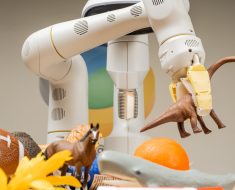Revolutionizing Agriculture: Advanced Imaging and Machine Learning Aid Potato Tuber Quality and Disease Assessment

Advanced imaging and machine learning techniques are breaking new grounds in the agricultural sector, particularly in the assessment of potato tuber quality and disease severity. A recent study, leveraging state-of-the-art technologies, has successfully developed an automated and user-friendly application named ScabyNet that combines potato tuber morphology evaluation and common scab (CS) severity assessment.
Three-Fold Objectives
The study was conducted with three definitive objectives. Firstly, it sought to evaluate the morphology traits of potato tubers, such as length, width, area, and color, to provide insights into tuber quality for the market. The second objective was to detect and quantify the severity of CS in potato tubers using Convolutional Neural Networks (CNNs). The final objective was to integrate these functionalities into an accessible application.
An In-depth Process
The research utilized 7200 tubers from yellow and red potato genotypes, collected from field experiments in Norway and a greenhouse inoculation experiment. The tubers were imaged using a Canon PowerShot G9 X Mark II camera and analyzed using OpenCV and TensorFlow within the ScabyNet interface. The GUI has two main modules: one for estimating tuber morphology traits, and another for assessing area lesions caused by CS. The tubers were categorized into five severity classes based on the percentage of lesions on the tuber skin.
ScabyNet: A Revolutionary Tool
ScabyNet’s image processing pipeline included steps such as background removal, color conversion, object identification, and segmentation. A machine learning tool, Trainable Weka Segmentation (TWS), was initially used for semi-automated segmentation, followed by manual validation. The deep learning module of ScabyNet used CNNs to predict CS severity levels, employing architectures like VGG16, VGG19, ResNet50V2, etc.
The application also allowed for color analysis in the L*a*b color space and used K-means color quantization. Results for individual images were displayed on the screen, while batch processing results were saved in a folder along with associated measurements. In essence, the study’s methodology provides a robust framework for evaluating potato tuber quality and disease severity, potentially benefiting agricultural practices and market analysis.





